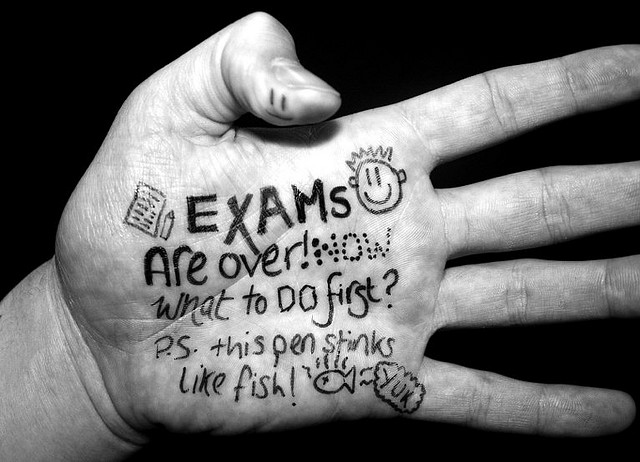A teacher must utilize a variety of assessment strategies to ensure that each student is meeting his/her learning outcomes. This includes assessment of learning, assessment for learning, and assessment as learning. When building assessment tools, it is also important to cater to each individual learner. Each student will have unique strengths and weaknesses and teachers should be aware of that. As a beginning science teacher, I am obligated to follow the BC Science curriculum. However, my student’s development in other areas such as English shouldn’t be ignored. As I gain my own classroom in the coming years, my focus is not just to cultivate students who can think scientifically, but to think critically on a variety of issues that may be outside the realms of science.
Assessment of Learning
Chapter 2 Test Review Checklist
Chapter 2 Test
Summative assessment that I’ve utilized in my practicum included exams, quizzes, lab activities. Because summative assessment is such a high stake activity, I tried to introduce a variety of forms of summative assessment in case students were weak at certain areas such as test-taking.
Although the BC curriculum does provide test templates that can be used, I chose to create my own tests in order to conform to the classes I personally taught. A typical Science 8 unit exam consists of a multiple choice section, a short true/false section, a short answer section, and a critical thinking section. Critical thinking questions doesn’t necessarily have a single correct answer. Rather, they are marked based on the student’s reasoning. For the short answer and critical thinking questions, students must write in complete sentences in order to receive full marks.
Prior to the test, I would provide students with a review checklist. The checklist listed what they would need to do and also had example questions that would be similar to what would seen on the test. In terms of test rewrites, students were allowed to rewrite one test per term. If the student did not do as well on the test rewrite, that is the mark they would be credited for.
Assessment for Learning
Formative assessment is such a powerful tool. It can give you an idea on student progress in minutes. This gives teachers the opportunity to adjust their lesson to better fit student needs. I have utilized assessment for learning in various ways to gauge students. For example, I often ran a short quiz at the beginning of class based on the readings they were supposed to have done the previous day. This highlighted sources of confusion that I could spend additional class time for discussion. I also utilized assessment for learning in collaborative learning situations. Doing a quick think-pair-share activity allows me to circulate the class just to listen in and offer guidance. Having students share their ideas afterwards gave them the opportunity to showcase what they knew.
Over my practicum, I tried to instill positive values such as work habits and positive interpersonal relationships through cooperative learning activities. I attempted to make each group member accountable for their portion of the work. This was accomplished through assignment of various roles (facilitator, writer, presenter etc.). Observing these groups proceeding through activities provided me the chance to formatively assessing their work habits.
One thing I hope to work on further is developing my questioning technique. Being able to ask questions on the fly that allows students to exercise their critical thinking is a long-term goal of mine.
Assessment as Learning
After every unit test, I would have my students write a self-assessment. Questions on the self-assessment included: How much time did you spend studying? How hard did you think the test was? Did you complete the review checklist? Did you make sure the answers were correct? Afterwards, I would attach the self-assessment to their marked test so that they would see if their mark reflected their assessment. Before they gave their tests back, they wrote a couple sentences on how they could improve their grades for the next time.
The self-assessment was more for my students than for myself. My hope was that students saw a correlation between their effort and their marks. Through this they would be able to see how they could improve for the following exam.

